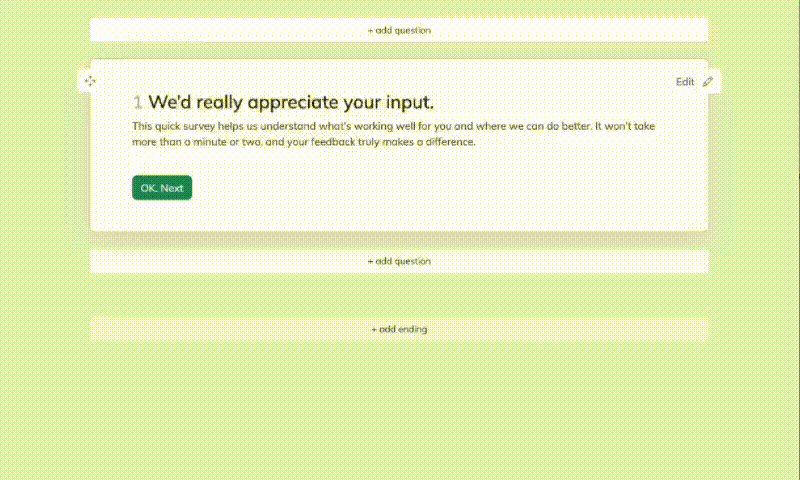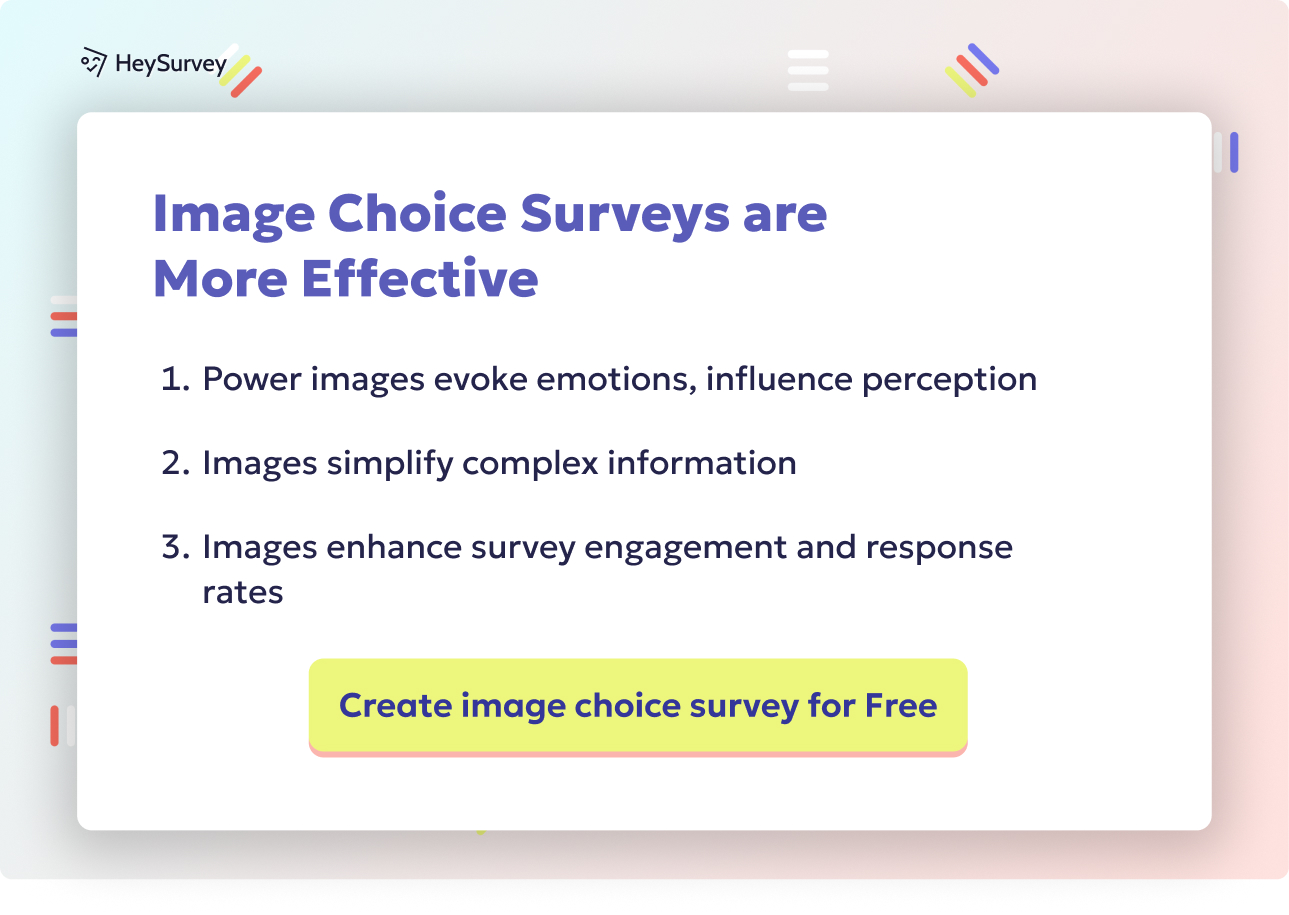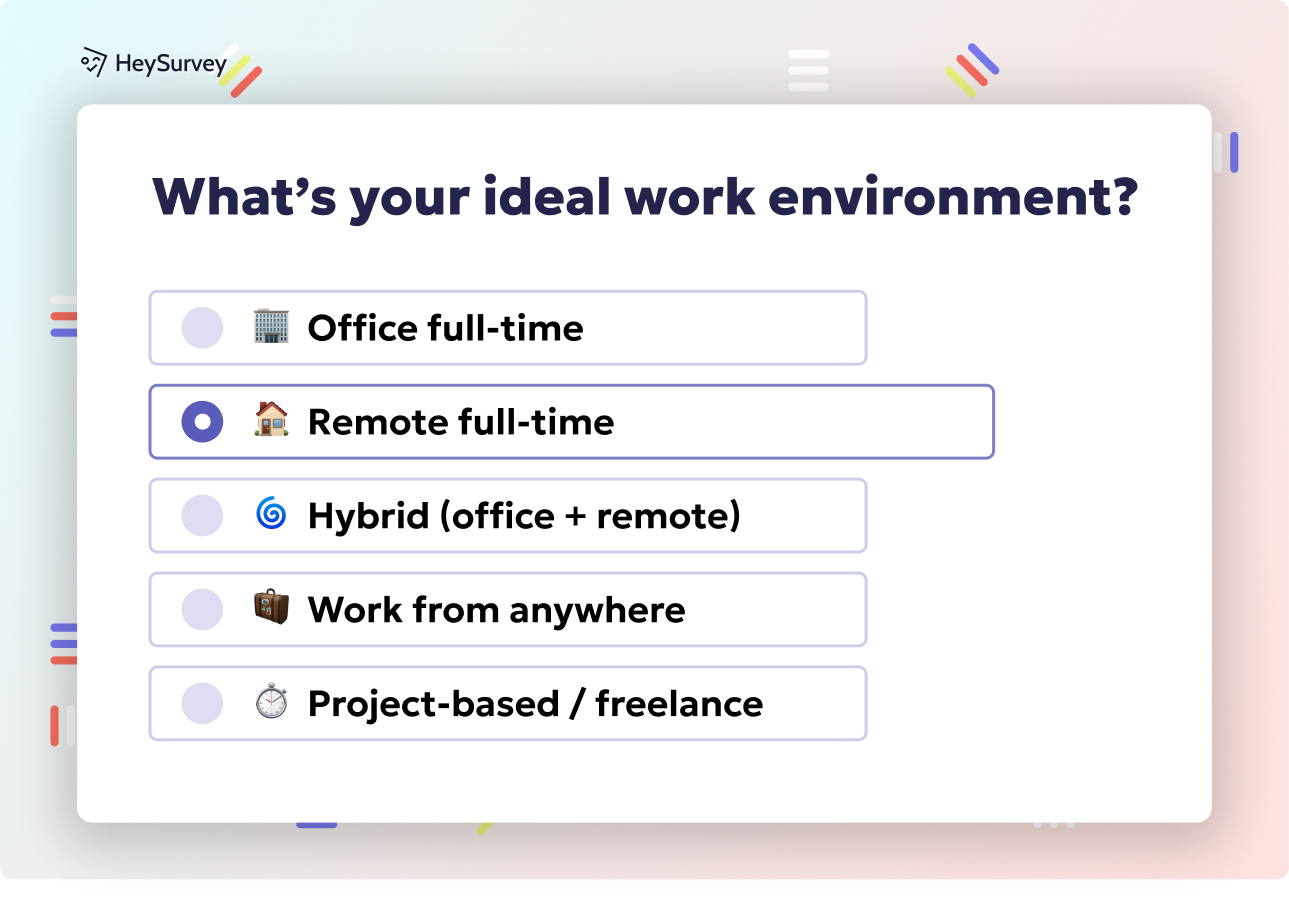31 Unbiased Survey Questions: Design Tips & Reliable Samples
Discover 30 unbiased survey questions across 6 key types to design accurate, reliable surveys that deliver clear, actionable insights.
Unbiased survey questions are the secret sauce behind truly accurate customer feedback and data-driven business decisions. When crafted with care, they eliminate hidden assumptions and encourage honest responses. Curious survey designers who use Google Forms, SurveyMonkey, or Typeform often ask about bias because these platforms automatically flag slanted language. In this guide, you’ll travel through six essential survey types—demographic, behavioral, attitudinal, comparative, follow-up satisfaction, and conjoint analysis—each with clear tips, best-use cases, and five sample prompts to spark your next project.
Descriptive (Demographic) Surveys
What are Descriptive (Demographic) Surveys?
Descriptive surveys zero in on the cold, hard facts about respondents’ backgrounds. Think: age, location, devices, or languages—but never opinions or preferences. By collecting neutral demographic facts, these surveys allow organizations to segment responses and uncover trends without making risky assumptions. The aim is always clear: learn who your audience is, not how they feel about you (yet).
Why & When Should You Use Them?
You’ll want these surveys when it’s time to: - Segment your audience for more targeted marketing campaigns. - Fine-tune user experience testing by understanding tester backgrounds. - Build diversity reports for HR, compliance, or ESG initiatives.
If your survey is a hearty meal, demographic questions are the appetizer. Start your questionnaire with them to prime other sections, or use them solo for micro-surveys when quick data is all you need.
Demographic surveys are especially powerful early in the process. By gathering core facts up front, brands and organizations make sure all later analysis is layered on top of a solid foundation. You can’t personalize or prioritize without knowing the basics about who’s responding.
5 Sample Neutral Demographic Survey Examples
Which of the following age ranges best describes you?
What is your current employment status?
Which language do you most often speak at home?
In which country do you currently reside?
Which type of device do you use most for online shopping?
Those five examples keep their wording impartial and leave space for all possible answers. Most importantly, none of them hint at what the “best” or “right” answer would be. That’s the gold standard of truly unbiased demographic data.
Providing inclusive response options, such as "Prefer to self-describe," in demographic surveys enhances data accuracy and respects diverse identities. (canview.com)

How to Create Your Survey with HeySurvey in 3 Easy Steps
If you’ve never tried HeySurvey before, no worries! Here’s a simple, step-by-step guide to get your unbiased survey up and running in no time. Ready to roll? After this, just hit the button below to open a template and start crafting your own.
Step 1: Create a New Survey
- Head to HeySurvey and click Create New Survey. You can either start from scratch with a blank sheet or choose a handy pre-built template tailored to your survey type.
- Give your survey a name internally—this helps keep your projects organized behind the scenes but isn’t visible to respondents.
- Once you name it, you’ll land in the Survey Editor, your command center for building and customizing your questionnaire.
Step 2: Add Your Questions
- Click Add Question at the top or between existing questions.
- Choose the type of question that suits your needs best—text inputs, single or multiple choice, scales (like satisfaction ratings), or dropdowns.
- Enter your unbiased survey questions exactly as you want them, keeping wording clear and neutral.
- Customize each question: mark it required or optional, add descriptions for clarity, or include images to jazz things up.
- Don’t forget you can reorder, duplicate, or delete questions as you fine-tune your survey flow.
Step 3: Publish Your Survey
- When your questions are polished and ready, hit the Preview button to see exactly how respondents will experience the survey.
- If happy with the look and feel, click Publish—note, you’ll need a HeySurvey account to publish and collect responses.
- After publishing, grab your shareable link or embed code to distribute your survey anywhere—social media, email, websites.
Bonus Steps to Take Your Survey from Good to Great
Apply Your Branding
- Upload your logo and customize colors, fonts, and backgrounds in the Designer Sidebar.
- This makes your survey look professional and consistent with your brand identity, which builds trust with respondents.
Define Key Settings
- Set your survey’s start and end dates so it’s live only when you want.
- Limit the number of responses if you want a capped data set.
- Add a redirect URL to guide users after they finish—like your thank-you page or special offer.
Use Branching Logic
- Spice up your survey with branching—questions that appear based on previous answers.
- This dynamic flow keeps surveys relevant and less overwhelming by skipping unrelated questions.
- You can also add multiple endings with custom messages or images tailored to each respondent’s journey.
That’s it! With just these few steps, you’ll have a perfectly crafted, unbiased survey ready to collect trustworthy data. Wanna get hands-on? Open your favorite survey template with the button below and start creating your own insightful questionnaire today.
Behavioral Surveys
What are Behavioral Surveys?
Behavioral surveys are all about what people do, rather than what they think. These questions dive into participants’ actions, habits, and history. There’s zero judgment—just crisp timelines, frequency counts, and choices made. By focusing on behaviors, you avoid the messiness of memory or speculation and get closer to the real story.
Why & When Should You Use Them?
You’ll find behavioral surveys are best for: - Mapping the customer journey by pinpointing key actions and missed steps. - Determining product adoption by discovering who does what, when. - Tracking reactions to marketing campaigns, app feature launches, or transactional events.
Timing is everything. To catch pure, recall-fresh answers, these surveys shine right after an action—think post-purchase, after using a new feature, or during an onboarding flow. When you want precise, bias-free snapshots of what actually happened, behavioral questions are unbeatable.
5 Behavioral Survey Questions Without Bias
In the last month, how many times have you used our mobile app?
Which feature did you access during your most recent session?
How long did your most recent task take to complete?
What payment method did you choose for your last purchase?
Which support channel did you consult first, if any?
Notice how each prompt is anchored in observable fact. You’re not asking for opinions or predictions—just what, when, or how often. The result is a dataset sturdy enough to drive real improvement.
Acquiescence bias, where respondents tend to agree with statements regardless of content, can be mitigated by using balanced scales and avoiding agree/disagree formats. (en.wikipedia.org)
Attitudinal (Opinion) Surveys
What are Attitudinal (Opinion) Surveys?
Attitudinal or opinion surveys jump straight into the world of feelings, perceptions, and satisfaction. These questions let you peek inside the customer’s mind, surfacing everything from starry-eyed joy to unfiltered frustration. Carefully built, they capture honest feedback while dodging the pitfalls of leading language.
Why & When Should You Use Them?
You’ll call on attitudinal surveys when you need to: - Gauge overall brand sentiment—are your customers delighted, meh, or mad? - Harvest deep insights after UX testing or software updates. - Monitor employee morale and engagement, especially during organizational change.
The best moments for these surveys arrive after major updates, events, or at set intervals (the quarterly pulse check lives here!). Honest attitudinal feedback tells you not only what happened, but how it made people feel—a priceless signal for retention and innovation.
5 Neutral Opinion Survey Wording Samples
How satisfied are you with our product’s ease of use?
How strongly do you agree or disagree that our support team resolved your issue promptly?
Which aspect of the service, if any, exceeded your expectations?
How likely are you to continue using the service over the next six months?
What is one improvement that would most enhance your experience?
Each question tiptoes around bias by keeping language neutral and choices balanced. Scales (Likert, agree-disagree) are evenly weighted. And, critically, the questions invite praise or criticism with equal ease—setting the stage for real results.
Comparative (A/B) Surveys
What are Comparative (A/B) Surveys?
Comparative (A/B) surveys throw two or more options into the ring and ask, “Which one wins?” Whether it’s homepage layouts, feature sets, pricing, or creative copy, the main goal is to measure preference. The trick is offering choices that are equally described, letting respondents’ true preferences shine through.
Why & When Should You Use Them?
This survey style sparkles when you want to: - Optimize product designs or price points before a major launch. - Nail down which marketing creative grabs attention or rings out as most memorable. - Compare usability features in a way that avoids designer bias.
Comparative surveys are ultra-effective with randomized groups or alongside usability tests. Balancing the presentation of each alternative prevents leading results, sharpening your data for confident go/no-go decisions.
5 A/B Survey Question Samples
Which of the following homepage layouts helps you find information faster?
When considering price only, which plan would you choose?
Which packaging design is easier to read at first glance?
Between Concept A and Concept B, which tagline is more memorable?
Which feature prioritization aligns better with your needs?
Each question is built to reveal a true preference, minus external influence. The alternatives are described plainly, without evaluative adjectives or loaded context. That’s the heart of untainted A/B survey testing!
Crafting neutral, unbiased questions ensures accurate and reliable survey results by eliminating leading language and assumptions. (usersnap.com)
Follow-Up Satisfaction Surveys
What are Follow-Up Satisfaction Surveys?
Follow-up satisfaction surveys are quick, laser-focused questionnaires sent hot on the heels of an interaction—think right after a support call, delivery, or training session. Their mission: Capture pure, fresh impressions when details are still vivid in customers’ minds.
Why & When Should You Use Them?
These rapid-fire surveys are clutch for: - Real-time service recovery, giving teams a chance to fix issues before they fester. - Tracking Net Promoter Scores (NPS) and other post-interaction metrics. - Continuous improvement of support, delivery, or onboarding workflows.
They work best right after key events, while customers are most likely to reflect honestly and helpfully. By arriving just in time, these surveys harvest feedback that’s direct and free from memory fog.
5 Post-Interaction Survey Examples
How satisfied were you with the resolution of your recent support case?
How clearly did the representative explain the next steps?
Which aspect of the interaction could we improve?
How confident do you feel about using the product after today’s training?
How likely are you to recommend our service to a colleague?
Every prompt is stripped of judgment, with open invitations for detail or constructive criticism. This lets you spot not just delight, but opportunity—turning even a hiccup into long-term loyalty.
Conjoint Analysis Surveys
What are Conjoint Analysis Surveys?
Conjoint analysis surveys are the heavy hitters of the unbiased question world. These advanced, choice-based surveys present a series of carefully engineered options—each blending features and prices in different ways. Respondents pick favorites (or rank them), making it possible to map out exactly which combinations get people reaching for their wallets.
Why & When Should You Use Them?
These surveys are clutch when you need to: - Determine optimal product bundles, feature sets, or pricing tiers. - Break down customer trade-offs before major product roadmap decisions. - Plan for market entry by understanding what truly drives purchase intent.
Conjoint surveys are a pre-launch powerhouse. When the stakes are high and data needs to mimic real-world shopping, this survey style delivers razor-sharp insights.
5 Conjoint Survey Question Examples Unbiased
Option A: $19/month, 10 GB storage, email support.
Option B: $25/month, 20 GB storage, chat support.
Which would you choose?Option A: Organic ingredients, 2-day shelf life.
Option B: Non-organic, 5-day shelf life.
Which appeals more?Rank the following laptop bundles from most to least preferred.
Select the car package that best fits your needs (present 3 impartial bundles).
Indicate the lowest price at which you would definitely purchase Package C.
Notice how each question describes attributes factually, never nudging or winking about which is “better.” This lets respondents reveal their true priorities, giving you clarity about what features matter most.
Dos and Don’ts for Crafting Unbiased Survey Questions
Dos: The Building Blocks of Unbiased Survey Best Practices
Stick to these modern survey commandments: - Use neutral wording—describe options impartially to invite honest feedback. - Pilot test your questions with a varied group to catch hidden bias. - Randomize answer order so no option gets special attention. - Keep scales (e.g., satisfaction ratings) symmetrically balanced. - Always offer “prefer not to say” or “none of the above” where possible.
Don’ts: Mistakes That Tip the Scales
Avoid these affirmation assassins: - Don’t lead with assumptions (Never “Since you loved the service...”). - Never double-barrel (Don’t ask two things in one: “How was delivery and support?”). - Skip absolutes (“Always,” “Never,” and “Everyone” kill nuance). - Don’t overload with jargon that alienates respondents. - Never force an answer if “Not applicable” makes more sense.
Here’s a playful checklist to hang above your next survey:
- Are questions short and clear?
- Have you pilot-tested with different audiences?
- Do respondents have an out?
- Is every item measuring only one idea at a time?
- Options shuffled and scales balanced?
Follow these routes, and you’ll soon be the survey designer others envy.
Conclusion & Action Plan
Unbiased survey design is the bedrock of trustworthy insights and accurate analytics. Using the right question types increases honesty, accuracy, and positive engagement with respondents. Pick the survey that matches your goal, test your questions, and tweak based on feedback. Ready to put your knowledge to work? Download our free question templates or join our newsletter for more sharp tips on survey methodology.
Related Question Design Surveys

29 Quantitative Survey Research Questions Example for Success
Explore 25+ quantitative survey research questions example with clear explanations and tips for c...

32 Good Survey Question to Boost Your Data Quality
Discover how to craft good survey questions with 30 sample questions across 8 types for better da...

31 Survey Question Mistakes You Need to Avoid Today
Discover 25 common survey questions mistakes with real examples and expert tips to craft clear, u...
